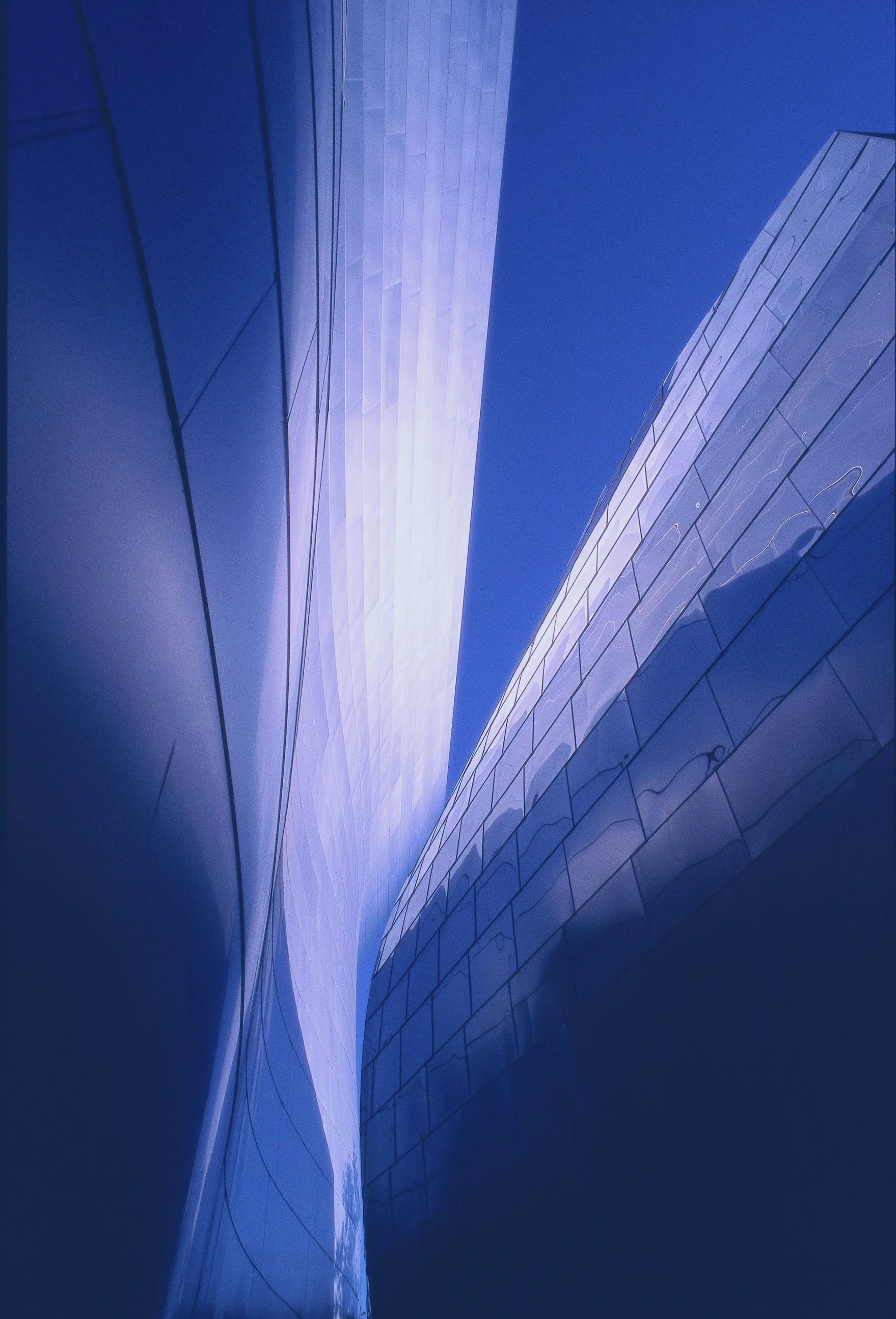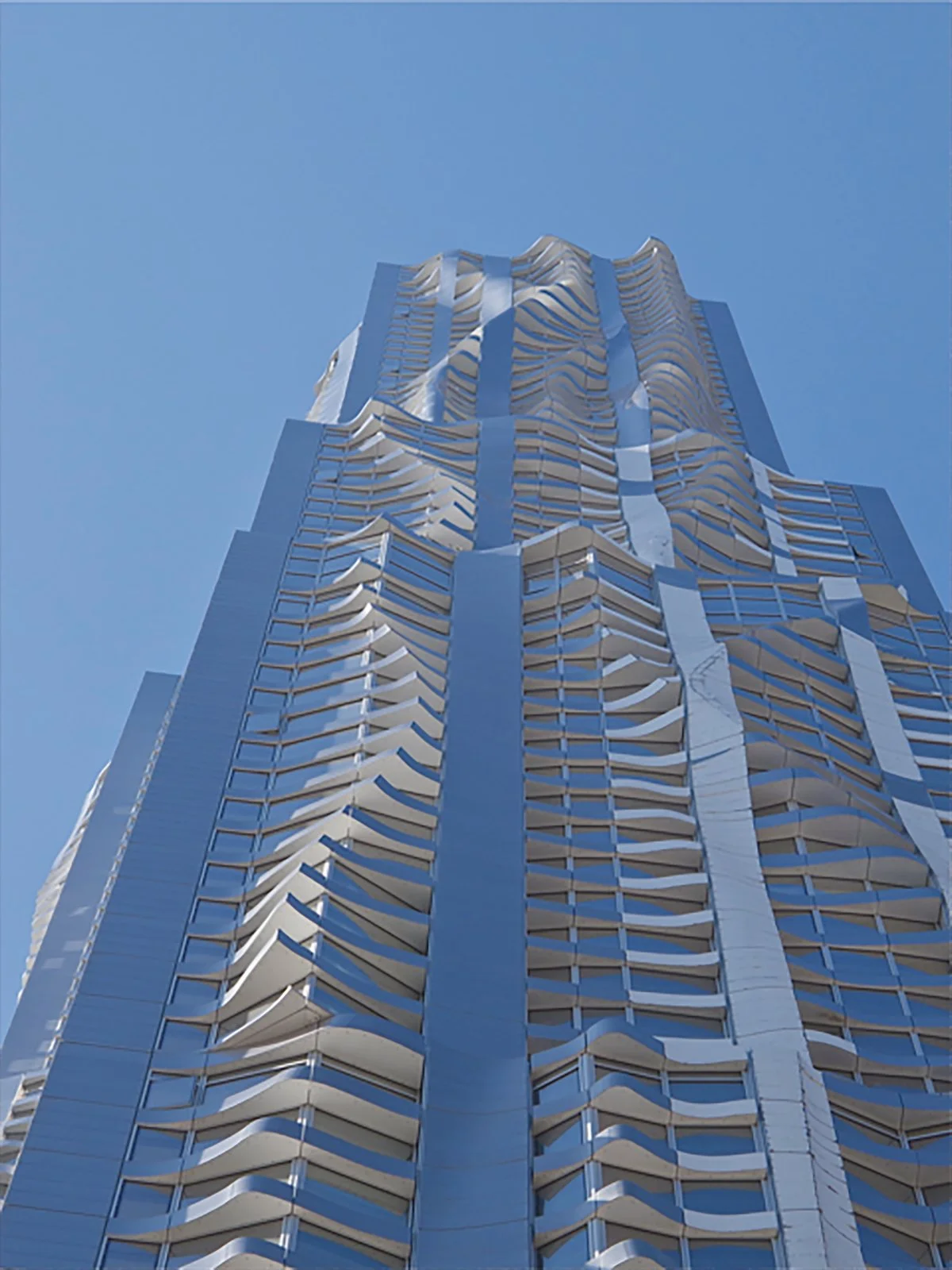Barcelona: Natural Gas Building: Architect EMBT: Enric Miralles and Benedetta Tagliabue
Truthful Fiction
I trust my manic maniac calm: I trust the camera everyday and thereafter. There is no mundane in routines that is me. Voices in my camera project visions: Fabulous voices my cameras see are my eyes’ visions: There is value in what my eyes have yet to see:
If the camera, my camera, saw a stone or an entire community splayed naked, my neural reaction would be the same. My camera’s common eyes see every footprint every movement equally- -until my lenses define the need for more.
Cities are my prey: A single frame is realized in an idea: There is nothing arbitrary about my agendas; My photographs are not arbitrarily made: They are made to represent something more: They are framed by primary colors: They are framed by shapes- -Photography shapes the things to come:
Shenzhen, China: Abandoned Factory: I lectured and taught a class for Ole Bauman
Within a diverse set of environments I occasionally recognize the polymeric connection- -like a slew of buildings seen as imaginary realities; The silence posing before colored shadows maneuvering in the light: The science of photography unfolds like armies in the nights: A wall of neural tissues stand upright: Visualized in rare sightings: The artist Jacob Lawrence’s The Migration Series imagined across skylit skies: Henri Matisse’s Jazz and Morocco periods extend the imaginary: The skies become patterned dreams. History’s centuries carry my movement for others to see: Colored shadows illuminate- -“us”. My camera prepares to make invasions across cities inhabited by the- -seen and unseen. They are there and my photographs await to be taken.
What is it like to be a witness to changing aesthetics, changing concepts, and part of the age of change in every breath- -My imagined memories know: My eyes witness the tales my memory shares: Story telling becomes my camera’s identity: I travel to new destinations creating new chapters- -histories filled with new realities: I search for a home for my captures:
I would love for the captured/images to embody the exaggerated fictions of the William Blakes, Issac Asimovs, and Philip K. Dicks: Alas their illustrations and illuminated lives are worlds not mine: I am more inclined towards comfort nesting in imaginary fictions- -true fictions by possibly Somerset Maugham’s Ashendon or Graham Greene’s human factors experienced in Our Man in Havana- -Simple, clean lines, worlds broadly imagined: I can imagine truth in their fiction… fictions truth. Their stories are to be believed as real.
Architect: Rafael Moneo: Barcelona: Puig Tower
My imagined world hurries me to new beginnings: Shenzhen alone would never be enough: Behind Shenzhen- -China awaits; Centuries, and lasting global impact appear beyond: I ventured inside the Georgian borders looking for Tblisi: Centuries before and histories ahead: Beyond the borders the Russian continents await: I didn’t travel to Bangladesh for Bangladesh: The collective histories of the Asian continents equally mattered: If life in Rio de Janeiro was all that I had seen in South America I would have bemoaned the missing of the continents’ collective cultural energies: Photographing in my continent reminds…To photograph the historical anthropological migration to North America from the North, South, East and West- -might be like traveling through a whiteout of fairy dust: Dreams beyond the imaginary await.
Imagine living a life where 100,000 captures become a card deck of memories: The entire narrative of a life lived resting atop a shattered window: Imagine a wavering, wayward baseball thrown where a single tree has fallen in the forest: The remains are a single encapsulated frame of a lifetime that not a soul has seen or heard- -The eyes of my cameras have seen: What awaits is the anxious patience for more.
Rio de Janeiro, Brazil: Architect Oscar Niemeyer: “ Casa DasCanoas “















































































